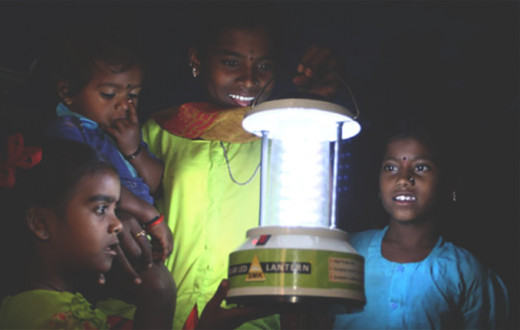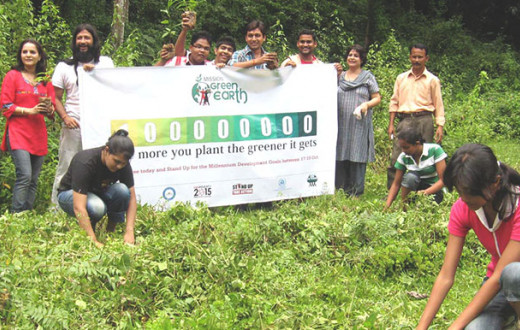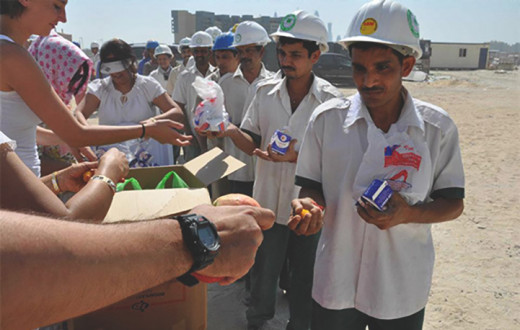The earthquake in January 2010 shook a nation that was already in the throes of political instability and poverty. The Red Cross estimated that three million people were affected by the earthquake. Hundreds of thousands of lives were lost, while many more were injured and over a million people were rendered homeless.
The Art of Living organized programs to bring material aid and trauma relief to people in the aftermath of the destruction in Haiti.
Three-phased support for Haitians
Phase 1: Providing trauma relief and material aid
In the first phase, volunteers distributed essential materials including food, clothes, and medicine. Art of Living teachers also conducted trauma relief workshops, which helped people cope with the psychological shock of losing their loved ones and their homes. Many volunteers visited hospitals and counseled people affected by the devastation.
“I lost my house, so I stay on the streets with my husband and my children. It’s so difficult to sleep at night with the rains, and it’s so stressful,” says Maila Villard, a victim of the earthquake. Maila took a trauma relief workshop where she gained knowledge and skills to cope with trauma and start life afresh. Maila shared with a volunteer, “When I do the breathing exercises, I forget that I sleep on the streets. It’s like I have no difficulties in my life. I finally feel that I have a clear mind. I feel calm.”
Phase 2: Empowering Haitian youth to lead
The second phase of the relief work in Haiti was initiated on 12 April 2010 when the IAHV launched an intensive program called the Nouvelle Vie Youth Corps, or New Life Youth Corps. Sixteen promising Haitian youth leaders from Cap-Haïtien, Carrefour, Hinche and Les Cayes were selected from graduates of the Youth Leadership Training Program (YLTP), which was started by the IAHV in Haiti in 2007. These young people have been trained by a team of Art of Living teachers as well as permaculture (sustainable agriculture) expert. The Youth Corps aims to rebuild Haiti by organizing communities, conducting trauma relief workshops and by teaching permaculture farming for a sustainable food supply.
Within 16 days, the Youth Corps had taught seven Art of Living trauma relief workshops to nearly 350 people living on the streets, in camps, and in makeshift shelters. Another 1000 people, including orphaned children, rape victims and youth from Cité Soleil, the most violent slum in Haiti, took the Breath-Water-Sound (BWS) workshop, which is specially designed for those in situations of disaster or poverty.
The team simultaneously taught people how to make compost and develop small-scale farms, creating greater self-sufficiency. The YLTP students mixed manure and planted over 100 fruit and vegetable seedlings in recycled containers like rice sacks. These were distributed to orphans, school children and youth leaders in Cité Soleil. News of the benefits of the program had quickly spread in the camps and among partner community organizations.
The Art of Living workshops empowered individuals and encouraged them to take responsibility for their community. Participants initiated a camp-wide clean-up as part of one program in a camp housing 40,000 people. The simple act of picking up trash created a sense of dignity and ownership.
Phase 3: Creating more youth leaders
In the following phases of the project, the Nouvelle Vie Youth Corps trained 100 more youth leaders to be Art of Living teachers and permaculture trainers. Committed to serving Haitian communities for a two-year term, the Youth Corps spread solutions for individual empowerment and community development.
MoU for Haiti relief
Advancing efforts to rebuild Haiti, Founder of the Art of Living, Gurudev Sri Sri Ravi Shankar, signed a Memorandum of Understanding (MoU) for Haiti relief with North Miami Mayor, Andre D. Pierre, Esq. on 20th April 2010. The MoU aimed to step up relief work in Haiti and provide sustainable solutions to the country’s specific challenges.







